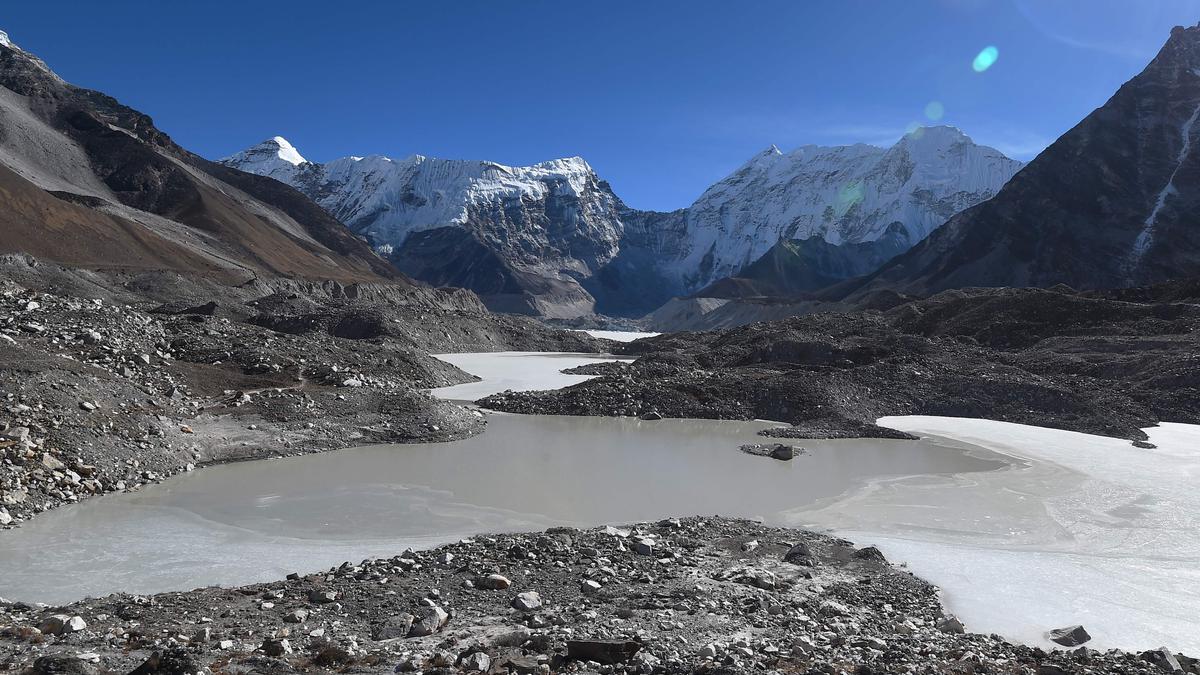High in the Himalayas, two villages near Nepal’s border with Tibet are getting power from an unusual source: a threatening glacial lake.
In this high-altitude region, climate change is accelerating the melting of mountain ice, with villages located below fast-filling glacial lakes facing a risk of catastrophic flooding.
But efforts to drain some of the excess water building up in the lakes, to lower disaster risk, also present an opportunity to boost clean power production, by installing small hydropower generators in the drainage channels.
Since 2017, 175 households in Langtang and Kyanjin, two villages in the high Kyanjin Valley, have been able to tap clean hydropower from efforts to drain the Kyanjin glacial lake for cooking, lights and other energy needs.
“We used to go three hours away from here to collect firewood” – something hard to find above the tree line, said 48-year-old Pasang Tamang, who runs a hotel in Kyanjin, a popular stopping point for tourists trekking in the mountains. “Now we have electricity to cook food and boil water,” she said.
The hydropower project, which cost $448,000, was paid for by the Hong Kong-based Kadoorie Charitable Foundation.
But expanding such smart solutions – which unusually cut both disaster risk and climate changing emissions – is proving challenging in Nepal with funding limited and work in high-mountain environments challenging and often costly.
Power from risk
Communities in the Himalayas – and other high mountain regions of the world – face growing risks from fast-filling glacial lakes, which can suddenly burst under pressure and send huge volumes of flash floodwater surging downstream.
More than 150 people were killed and 2,000 houses damaged after Lhonak Lake in the northeastern Indian province of Sikkim burst its banks in October last year.
Nepal has worked to lower the pressure in several of its most at-risk mountain lakes, including Tsho Rolpa and Imja, using canals to channel some water away.
It also has looked at generating power from glacial lake draining since at least 2016, when Dhananjay Regmi, a glacier expert at Tribhuvan University, recognised the possibility while leading work on efforts to reduce lake levels and cut disaster risk near Mount Everest.
Working with colleagues, he studied four Nepalese glacial lakes – Thulagi, Lower Barun, Lumding Tsho and Hongu-2 – and produced a study showing hydropower generation was possible as part of drainage efforts.
All four lakes were identified in a 2020 report by the International Centre for Integrated Mountain Development as having a high risk of bursting their banks.
“There are two benefits to us: first, the risk of outburst will be reduced, and second, we get energy at the same volume throughout the year,” Regmi told the Thomson Reuters Foundation.
He has focused in particular on Thulagi glacial lake, about 200 km from Kathmandu in Manang district.
The 2.5-km-long lake is 73 metres deep and holds 36 million cubic metres of water, according to Regmi’s 2017 report – enough to fill more than 14,400 Olympic swimming pools.
If it were to burst, the resulting floods could directly affect 166,000 people downstream and impact many more, with roads, bridges and larger hydropower projects in the region at risk, according to an unpublished analysis by Narendra Khanal, a geography professor at Tribhuvan University.
Losses could reach $415 million, the research found, if expected flood levels of 35 metres above the riverbed were reached, requiring replacement of the Marsyangdi and Middle Marsyangdi hydropower dams and putting their revenue at risk.
Channelling water out of the lake to hydropower generating equipment, could produce 50 megawatts (MW) of electricity year-round, he said, and lower the lake’s water level by five to 10 metres.
“When the water level is reduced, we don’t have to worry about the lake bursting,” Regmi said.
Funding dilemma
But finding money for such double-benefit projects and putting them into operation is not easy.
Nepal, working with the United Nations Development Programme (UNDP) is seeking $50 million from the Green Climate Fund, with co-financing from the government, UNDP and the private sector, to lower water levels and cut the risk of floods from the Thulagi, Lower Barun, Lumding Tsho and Hongu-2 lakes. The proposal does not include plans to also generate hydropower.
Chiranjeevi Chataut, the director general of Nepal’s Department of Energy Development, said making such generation projects work in the high Himalayas is too challenging, one reason the country is not making plans for them.
Still, “if any private sector (applicants) are interested, we can discuss,” he said. Mr. Regmi admitted working at high altitudes could be difficult and costly, but said such generation could be helpful in regularising year-round hydropower supplies.

